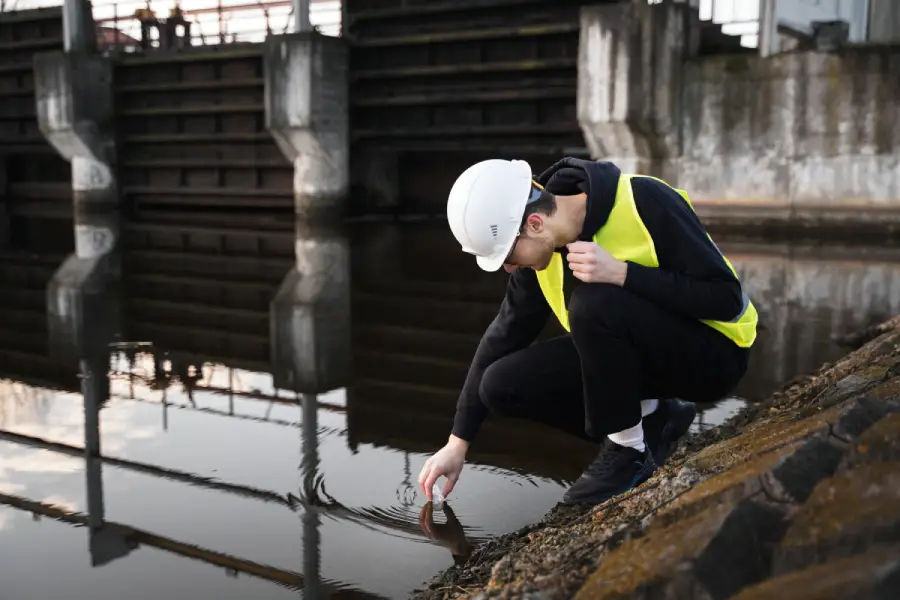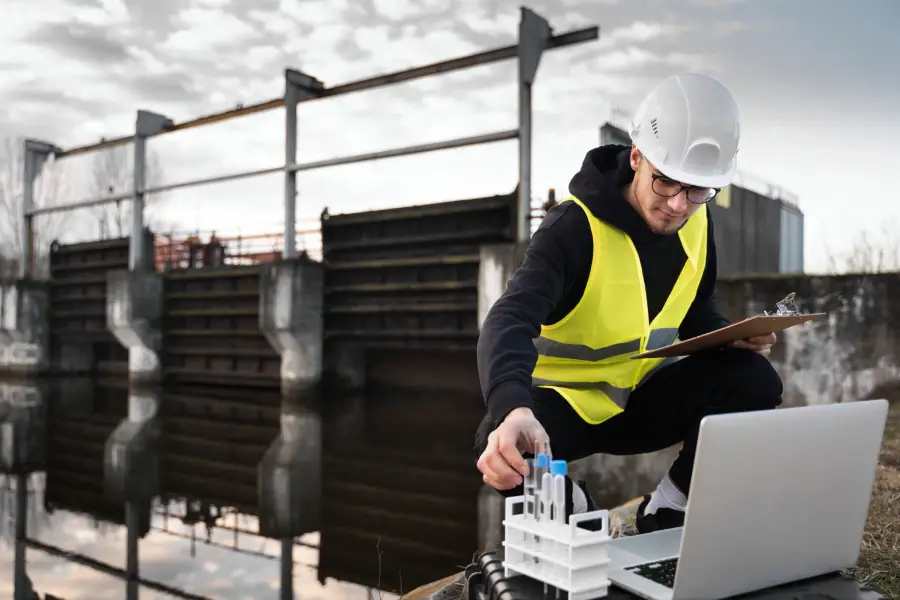Heavy rain, melting snow, and urban development all create challenges for managing stormwater. Without proper systems, runoff can lead to flooding, erosion, water pollution, and damage to infrastructure. This is where stormwater management comes in, a combination of engineering, planning, and environmental practices that keep water flowing safely.
In this article, we’ll explain what stormwater management is, its purpose, objectives, regulatory framework, and the techniques used to control and treat runoff in both urban and natural settings.
What Is Stormwater Management?
Stormwater management is the process of controlling, collecting, storing, and treating rainwater runoff to reduce flooding, prevent water pollution, and protect natural resources. It involves designing systems that manage excess water from rooftops, streets, parking lots, and other impervious surfaces that prevent water from naturally soaking into the ground.
Purpose of Stormwater Management
The purpose of stormwater management is to:
- Prevent flooding by slowing and controlling runoff.
- Reduce water pollution by filtering pollutants before they reach rivers, lakes, or groundwater.
- Protect ecosystems by maintaining natural hydrology, supporting efforts in ecosystem restoration and demonstrating how civil engineers help the environment.
- Support sustainable development by reducing infrastructure strain and improving water quality.
Put simply, if you’ve wondered how does stormwater management work, the answer is through a mix of engineered structures and natural solutions that capture, slow, store, and treat runoff before it causes damage.

Objectives of Stormwater Management
Stormwater management systems are designed with several key objectives in mind:
- Flood reduction: Detaining runoff during storms and releasing it slowly to prevent downstream flooding.
- Pollution prevention: Removing sediments, nutrients, oils, and chemicals that wash off impervious surfaces.
- Erosion control: Stabilizing soils and preventing damage to streams and shorelines.
- Groundwater recharge: Allowing water to infiltrate and replenish aquifers where possible.
- Ecosystem protection: Safeguarding wetlands, rivers, and aquatic habitats from stormwater impacts, often requiring wetland delineation and wetland mitigation to ensure compliance.
- Urban resilience: Helping cities adapt to climate change and more frequent extreme rainfall events.
When implemented effectively, stormwater management creates multiple benefits: reduced flood risk, improved water quality, healthier ecosystems, and enhanced community safety.
Stormwater Regulations
Stormwater management is not just best practice, it is often a regulatory requirement.
- In the United States, the Environmental Protection Agency (EPA) oversees stormwater regulations under the Clean Water Act. Municipal Separate Storm Sewer System (MS4) permits require communities to implement Best Management Practices (BMPs) to control runoff.
- States and local governments set additional requirements for new developments, construction sites, and industrial facilities.
- Regulations often require Stormwater Pollution Prevention Plans (SWPPPs) to ensure compliance during construction.
Globally, similar frameworks exist to safeguard water resources, demonstrating the importance of stormwater management in sustainable land development.
Stormwater Management Techniques
Stormwater management uses a wide range of practices, from traditional engineered systems to modern “green infrastructure.”
Traditional Approaches
- Stormwater detention ponds: Capture runoff and release it slowly to reduce peak flows.
- Retention basins: Hold water permanently, allowing sediments and pollutants to settle before discharge.
- Culverts and storm sewers: Convey runoff safely away from developed areas.
Green Infrastructure and Low-Impact Development (LID)
Modern approaches emphasize mimicking natural water cycles:
- Rain gardens and bioswales: Landscaped areas that filter and absorb runoff.
- Permeable pavements: Surfaces that allow water to infiltrate into the ground.
- Green roofs: Vegetated rooftops that absorb rainfall and reduce runoff.
- Constructed wetlands: Engineered ecosystems that treat stormwater naturally.
Erosion and Sediment Control
- Silt fences, check dams, and mulching are used during construction to prevent sediment from entering waterways.
- Vegetative buffers stabilize soils and filter pollutants along water bodies, often paired with insights from geotechnical engineering and structural engineering to ensure long-term stability.
How Stormwater Management Works Together
A typical stormwater management plan combines several techniques, detention basins to control flow, green infrastructure to filter pollutants, and erosion controls during construction. This integrated approach maximizes effectiveness and sustainability.

Conclusion
So, what is stormwater management? It is the practice of designing and implementing systems that control, store, and treat stormwater runoff to protect communities and the environment.
The purpose of stormwater management is clear: reduce flooding, improve water quality, prevent erosion, and safeguard ecosystems. By applying techniques such as detention ponds, bioswales, permeable pavements, and regulatory BMPs, engineers and planners ensure that water is managed responsibly.
In an era of climate change and rapid urbanization, effective stormwater management is more important than ever. It not only addresses immediate challenges like flooding but also supports long-term resilience, healthier environments, and sustainable growth.
